


|
Commenced:
|
01/02/2015 |
|---|---|
|
Submitted:
|
08/03/2017 |
|
Last updated:
|
16/03/2017 |
|
Location:
|
1220 Valley Forge Road, Suite # 27, Phoenixville, Pennsylvania, US |
|
Phone:
|
use email |
|
Website:
|
http://www.permscape.com/ |
|
Climate zone:
|
Cool Temperate |
(projects i'm involved in)
Back to Permscape - Permaculture Food Forest Oasis and Education Center
Project: Permscape - Permaculture Food Forest Oasis and Education Center
Posted by John Stevenson about 8 years ago
On a wooded site a stone’s throw from Valley Forge National Park, we are learning from our mistakes and planning in the moment with great hope for the eventual finished project.
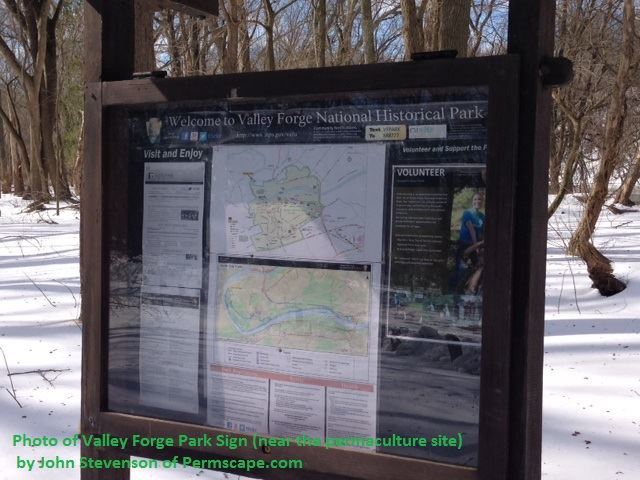
We had not lost hope or motivation. As mentioned previously, from aerial photographs the subject property looked like it was comprised of dense woods.
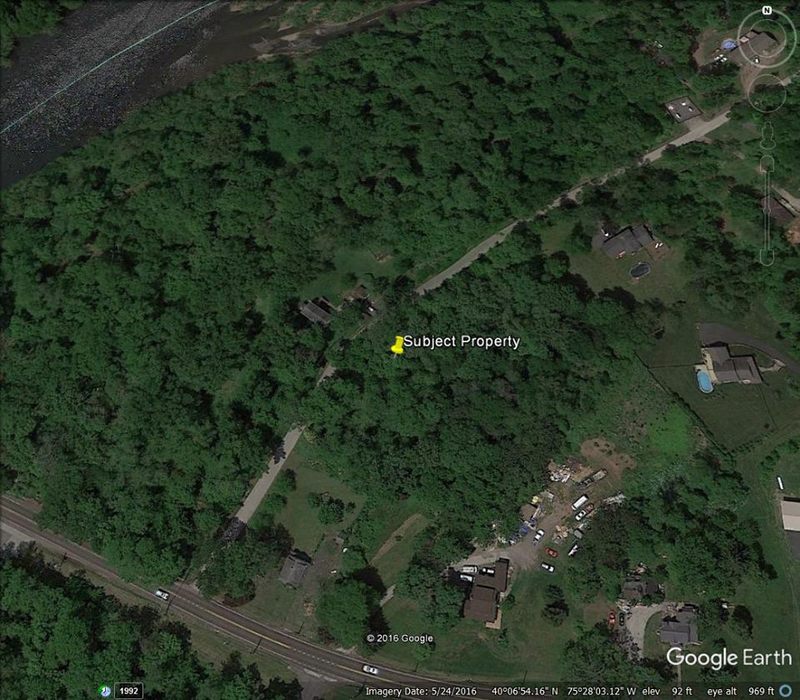
This was an illusion. Once our boots hit the dirt we discovered the property was made up of a mix of dense groundcover vines (especially poison ivy) and many very small trees. The canopy consisted of several mature trees. Most of these were dead or dying. They looked from above that they had foliage on them because of the dense climbing vines.
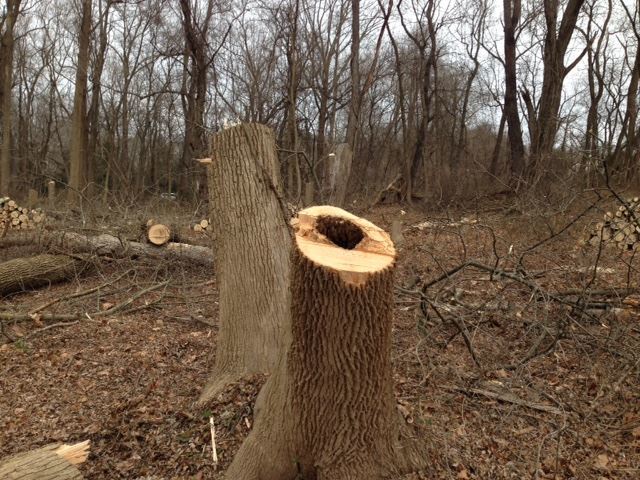
Phase one commenced and the property began its transformation into a permaculture nursery and food forest farm. Our plan was to attempt to preserve the life of every healthy tree. We waited for winter when the trees would be dormant. The smaller live trees were pruned to the ground (coppice) or a foot or so above.
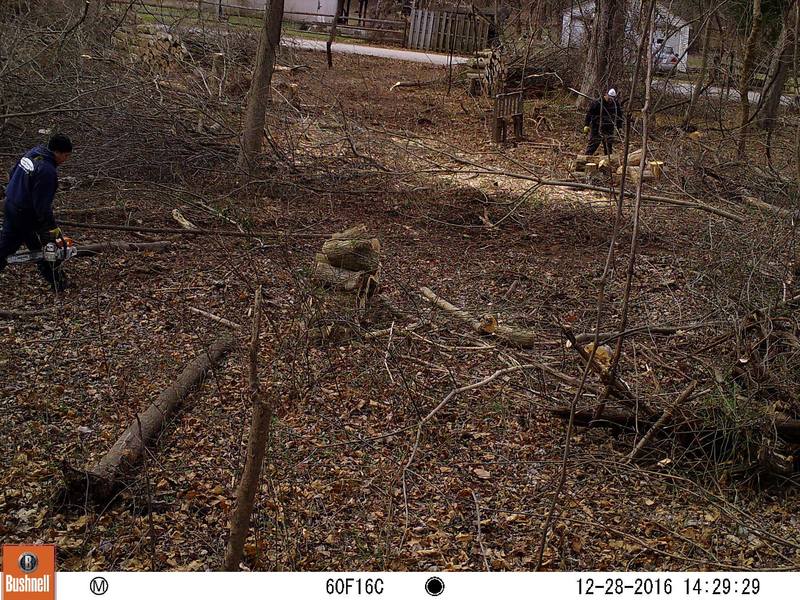
(Workers photographed by security camera on the site)
The larger trees were pruned to about two meters (Pollard). New growth is expected to appear this spring. This new wood will be harvested on a four year cycle. Other trees will be left to grow usable construction wood over the next 40-50 years for the next generation.
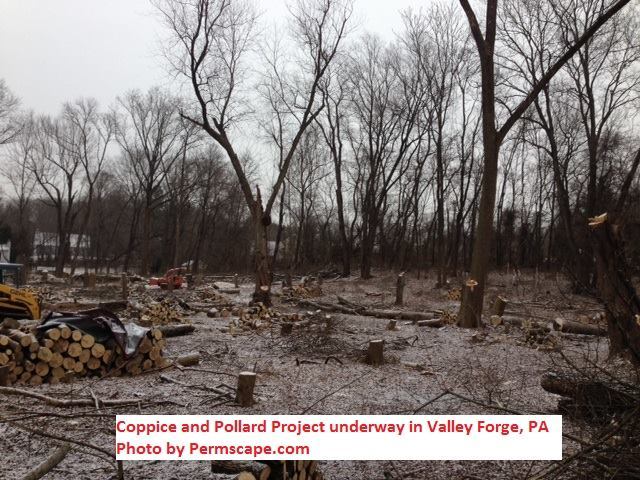
Cuttings will be taken from choice hardwoods to root into new trees which will be planted elsewhere on the property. The coppiced trees will continue to grow for decades if not centuries. Pruning of coppice wood provides a sustainable renewable energy. It can be used to create biochar to efficiently sequester CO2 and returned to the soil for exceptional fertility. Coppiced trees tend to be healthier and live longer than other trees. It has been reported that coppiced trees will not die of old age and some remain in production after centuries.
At permscape.com we understand that the second you put a shovel in the dirt you are changing nature’s plan (for better or worse). Any permaculture practitioner should examine the ecosystem and best consider what will happen next. We should all strive to steer our properties towards the best possible outcome.
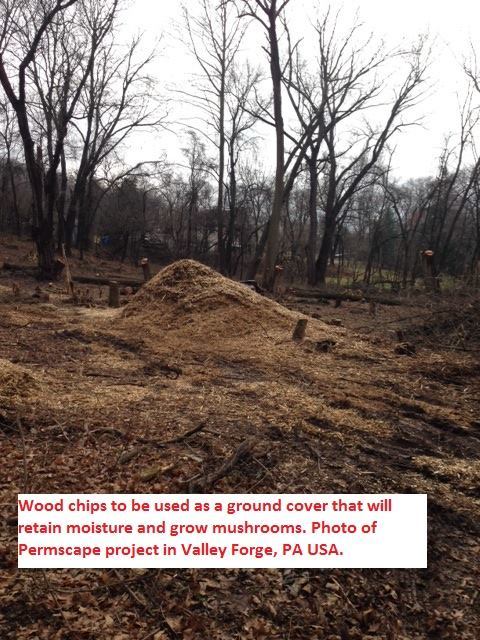
For example, earlier I mentioned the presence of tree infections from bacteria and parasitic fungus. Returning a cover to the floor of wood chips will help hold moisture and create a nutritious food web for the insects, animals, and microbes of the site. The flip side is that cutting and chipping so much woody biomass could potentially allow the diseases to spread by creating an easily assessable vector for the parasitic fungus. We have decided to declare war on the parasites.
More info to follow in our next post.....
You must be logged in to comment.
Note: The various badges displayed in people profiles are largely honesty-based self-proclamations by the individuals themselves. There are reporting functions users can use if they know of blatant misrepresentation (for both people and projects). Legitimacy, competency and reputation for all people and projects can be evidenced and/or developed through their providing regular updates on permaculture work they’re involved in, before/after photographs, etc. A spirit of objective nurturing of both people and projects through knowledge/encouragement/inspiration/resource sharing is the aim of the Worldwide Permaculture Network.
 |
MemberA member is a permaculturist who has never taken a PDC course. These cannot become PDC teachers. Members may be novice or highly experienced permaculturists or anywhere in between. Watch their updates for evaluation. |
|---|---|
  |
Permaculture MatchmakerOne of these badges will show if you select your gender and the "I'm single, looking for a permaculture partner" option in your profile. |
 |
PDCPeople who claim to have taken a Permaculture Design Certificate (PDC) course somewhere in the world. |
 |
PDC VerifiedPeople who have entered an email address for the teacher of their PDC course, and have had their PDC status verified by that teacher. Watch their updates for evaluation. |
 |
PRI PDCPeople who’ve taken a Permaculture Research Institute PDC somewhere in the world. |
 |
PDC TeacherPeople who claim to teach some version of PDC somewhere in the world. |
 |
PRI TeacherWith the exception of the ‘Member’ who has never taken a PDC, all of the above can apply to become a PRI PDC Teacher. PRI PDC Teachers are those who the PRI recognise, through a vetting board, as determined and competent to teach the full 72-hour course as developed by Permaculture founder Bill Mollison – covering all the topics of The Designers’ Manual as well as possible (i.e. not cherry picking only aspects the teacher feels most interested or competent in). Such teachers also commit to focussing on the design science, and not including subjective spiritual/metaphysical elements. The reason these items are not included in the PDC curriculum is because they are “belief” based. Permaculture Design education concerns itself with teaching good design based on strategies and techniques which are scientifically provable. PRI PDC Teachers may be given teaching and/or consultancy offerings as they become available as the network grows. |
 |
Aid WorkerThe individual with this badge is indicating they are, have, or would like to be involved in permaculture aid work. As such, the individual may or may not have permaculture aid worker experience. Watch their updates for evaluation. |
 |
ConsultantThe individual with this badge is indicating they are, have, or would like to do paid permaculture design consultancy work. As such, the individual may or may not have permaculture consultancy experience. Watch their updates for evaluation. |
 |
Community ProjectCommunity projects are projects that help develop sustainable community interaction and increase localised resiliency. |